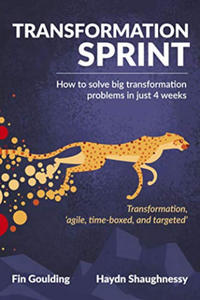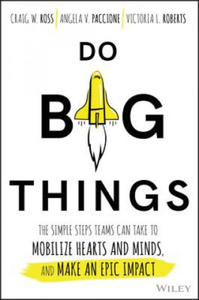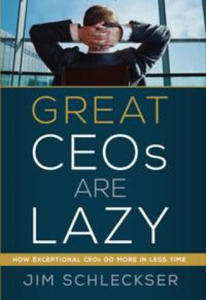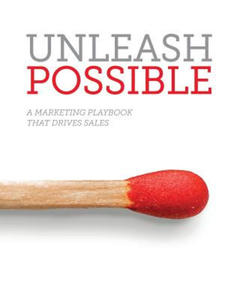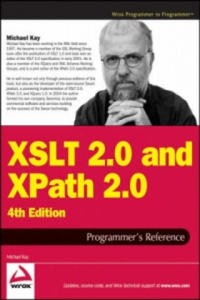libristo how to get things done get focused get going get results 7434253
- znaleziono 41 produktów w 3 sklepach
Get Things Done John Wiley and Sons Ltd
Książki / Literatura obcojęzyczna
Robert Kelsey's What's Stopping You? has become a self-help classic. His What's Stopping You? books have helped thousands of people worldwide overcome their limiting beliefs and bash through their barriers to success. Now Robert is back to help us defeat the obstacles that stop us achieving more in our everyday lives. Many of us have the greatest of intentions but find ourselves procrastinating, which results in low attainment and frustrated ambitions. Grounded in solid psychological research Robert helps us examine why we might have these tendencies and how to overcome them in order to feel more together, in control and on-top of everything.Looks at the psychology behind why we procrastinate, in order to understand and change our behaviour, forming new, effective habits Provides practical solutions to help us 'get things done' in real life situations including meetings, on the phone, with e-mail, looking for a job and starting a business Includes techniques to improve focus and aid concentration Examines how disorganisation is not innate and how we can learn processes that will allow us to be more effective How to bring control to certain areas of your life and reduce stress and uncertainty Get Things Done is emotional ergonomics for the organisationally-challenged individual -- at home, at work, with themselves, and with others.
Sklep: Libristo.pl
Get it Done On Time! APress
Książki / Literatura obcojęzyczna
This is the story of a company that is in trouble, but by talking through the implementation of Critical Chain project management planning and the Theory of Constraints, you will learn as they do, how to implement this effective project management solution.§§Tim is an experienced project management consultant. He knows great solutions and compelling§results and has seen project management solution work, but... too often sees§project management methods oversimplified and underperforming when incorrectly§implemented. Such is the case with Tim's§friends Randal and his more technical friend Gary. They are at risk of§losing his their jobs and seeing the company go bankrupt unless things change. Randal works frantically with Tim to learn,§implement, and get significant results from real world tools to help save his§company as it is literally falling apart around him. While Tim and Gary focus on the more technical aspects of Critical Chain.§§This book covers:§§The variety of issues,§steps, and challenges to get individual and organizational buy-in to§implement compelling project management solutions.§Details on the Critical§Chain solution and implementing it in an organization.§Tim, Randal, and Gary's§journey in trying to save their company and implementing a new project§management methodology in their organization.§§Readership: §§The Theory of Constraints§(TOC) and Critical Chain Community§People who like business§novels, project management, and/or organizational change.§Teachers looking to§provide case studies to their students on project management,§organizational change, or Critical Chain.
Sklep: Libristo.pl
The Deceased-focused Approach to Grief Springer, Berlin
Książki / Literatura obcojęzyczna
Conventional grief models focus on the bereaved, including actions that they need to take to get back to normalcy following the death of a loved one. This book suggests that it might be helpful in the grieving process to focus on the deceased, instead. Research points to the benefits of altruistic acts and thoughts, including improvements in mood. Altruistic acts and thoughts also could be extended to the deceased, who in death has experienced a loss as well. By taking on the perspective of and being empathic toward the deceased, a "response shift" occurs that could result in mood improvement and happiness in the bereaved. The book provides guidelines for this alternative grief model in the death of a child, of a teenager, of a spouse/partner, and of a sibling; and in multiple deaths and in persistent grief experience among others. Based on motivational principles, a workbook is also provided for monitoring progress in coping with bereavement. Comprehension questions and additional readings are provided in each chapter to help the reader further explore the topic at hand. This book would be useful in a course on death, dying and bereavement; to healthcare practitioners/bereavement counsellors; and to scholars in death, dying and bereavement across different fields including psychology, sociology, social work, public health and religion.Most grief models focus on the bereaved, including actions the survivor needs to take to get back to normalcy after a loss. However, in the grieving process it might be helpful if attention is shifted to the deceased, instead. The bereaved, by doing things she or he perceives as pleasing to the deceased, might receive healing and satisfaction in return.Lisa Farino (2010) notes that there is no shortage of research pointing to the beneficial effects of focusing on others. In a study by Carolyn Schwartz and Rabbi Meir Sendor (1999), lay people with a chronic disease were trained to provide compassionate, unconditional regard to others who had the same illness. The results showed that the providers of care and compassion reported better quality of life than the recipients of care and compassion, even though both givers and receivers had the same disease. The givers showed profound improvements in confidence, self-awareness, self-esteem, depression, and in role functioning. The researchers emphasized the beneficial importance of "response shift" (the shifting of internal standards, values, and concept definition of health and well-being) in dealing with one's own adversity. Farino (2010) notes that this research is profound because in western culture the belief is that feeling happy tends to be getting something for yourself.There are biological origins to the notion that "it's better to give than to receive." Using the functional magnetic resonance imaging (fMRI), researchers were able to demonstrate a connection between brain activity and giving. People who gave voluntarily and also for a good cause experienced more activation of the part of brain that controls for pleasure and happiness (e.g, Harbaugh, Mayr & Burghart, 2007).Studies show that about 7% of the US population experience complicated or prolonged grief disorder (e.g., Kersting et al, 2011). This is persistent grief that does not go away, and many parents tend to experience this after the loss of a child. In their study Catherine Rogers and colleagues (2008) found bereaved parents reporting more depressive symptoms, poorer well-being and more health problems after a child's loss almost 20 years later.Survivors usually show concern about how their deceased loved ones felt prior to death and if happy or not in the afterlife (e.g., Eyetsemitan & Eggleston, 2002). A study reported respondents used emotion discrete terms such as sad, happy or angry to describe the faces of deceased persons. The researchers suggested that the perceived emotional state of a deceased loved one
Sklep: Libristo.pl
Spalona Żywcem Wyd. Kieszonkowe - Souad
Książki & Multimedia > Książki
Opis - Pierwsze na świecie świadectwo ofiary zbrodni honorowej. Miała siedemnaście lat i zakochała się: zhańbiła rodzinę. Więc rodzina wydała na nią wyrok śmierci... Pokochała go pierwszą miłością. Myślała, że się z nią ożeni. Ale ukochany zniknął, a ona odkryła, że jest w ciąży. A w jej świecie to najcięższa zbrodnia... W zapomnianej przez Boga wiosce w Cisjordanii kobiety są warte mniej niż zwierzęta domowe. Tu mężczyzna jest panem życia i śmierci żony, córki, siostry. Brat może bezkarnie zabić siostrę, matka - córkę, kolejną bezużyteczną dziewczynkę, jaka się urodzi. Tu kobiecie odbiera się godność, a nawet życie zgodnie z odwiecznym obyczajem i uświęconą tradycją. A śmierć jest karą dla dziewczyny, która zhańbi rodzinę. Tak jak Souad. Wyrok wydaje jej ojciec. Szwagier dokonuje egzekucji. Oblewa Souad benzyną i podpala... SOUAD przeżyła - cudem, ale rodzina usiłowała zabić ją nawet w szpitalu. Na zawsze jednak pozostanie straszliwie okaleczona - na ciele i duszy. I wciąż musi się ukrywać; dopóki żyje, jej rodzinę okrywa hańba. Spalona żywcem, opublikowana pod pseudonimem szokująca opowieść o piekle, jakim było jej dzieciństwo i młodość, stała się międzynarodowym bestsellerem. Wydana w 37 w krajach książka przerywa tabu milczenia wobec istniejącej nadal w krajach muzułmańskich barbarzyńskiej tradycji. Nieludzkiego obyczaju, prawa mężczyzn, na mocy którego co najmniej pięć tysięcy kobiet pada co roku ofiarą zbrodni honorowej. Nazwa - Spalona Żywcem Wyd. Kieszonkowe Autor - Souad Oprawa - Miękka Wydawca - Amber Kod ISBN - 9788324159406 Kod EAN - 9788324159406 Wydanie - 1 Rok wydania - 2016 Tłumacz - 31182,maria rostworowska; Format - 110 x 175 x 14 Ilość stron - 224 Podatek VAT - 5% Premiera - 2016-06-23
Sklep: InBook.pl
Under the Duvet Penguin
Powieści i opowiadania
'When people ask me what I do for a crust and I tell them that I'm a novelist, they immediately assume that my life is a non-stop carousel of limos, television appearances, hair-dos, devoted fans, stalkers and all the glitzy paraphernalia of being a public figure. It's time to set the record straight. I write alone, in a darkened bedroom, wearing my PJs, eating bananas, my laptop on a pillow in front of me ...' Her novels are adored by millions around the world
Sklep: Albertus.pl
Transformation Sprint: How to fix big transformation problems in just 4 weeks Independently Published
Książki / Literatura obcojęzyczna
"Pragmatic, practical and timely, it fills a gap in our knowledge of transformation...."How do companies like Amazon, succeed time and time again with new projects, new platforms and new services? In the process, these champions of modern business, reinvent the way they get things done. They don't need to set up large digital transformation programs because they are always evolving anyway. That should be the goal of any good leader but how is it done?In Transformation Sprint, the author's aim is to unlock the secretes of transformation by focusing on the critical role of evolutionary learning in transformation design.It's 2021 and the world is in crisis. What's needed are these new agile planning tools that powered companies like Amazon to global leadership, tools that give you results even when the problems are large and imposing.The Transformation Sprint is a six step method that embraces agile thinking and agile practices and applies them to the problem of designing and executing significant change in an evolutionary way with strong learning mechanisms.
Sklep: Libristo.pl
Do Big Things John Wiley & Sons Inc
Książki / Literatura obcojęzyczna
An inspiring, practical and progress-oriented blueprint for energetic achievement.Amid constant swirl, uncertainty, and complexity is your team capable of doing big things? Too often people are pulled together, labeled a "team," given a directive, and expected to deliver results quickly. Soon, however, due to lack of focus, increasing pressures and competing priorities the team suffers from DSD: distracted, hopelessly stressed and disconnected from one another. Predictably, the team flatlines and the energy needed to succeed is lost.Based upon research of what successful teams do to overcome severe odds, Do Big Things presents an intuitive, seven-step process that equips teams with how to quickly and consistently operate in a manner necessary for success.Team members develop the self-awareness and ability to:Bring their best to every situationBring out the best in others in every interactionPartner across the business to deliver common objectivesFilled with practical tools and engaging stories of teams today, Do Big Things equips leaders with "the how" to quickly identify and activate the behaviors needed to achieve more than you or your team ever thought possible. Idea and information exchanges interlock the hand, head and heart of each team member to get everyone moving toward a common goal. Increasingly, individually and collectively, the team becomes emotionally stronger and more productive as they do their work.Do Big Things provides your team with the common language necessary to be authentic, empathetic and transparent, so that potential barriers to success come to light - faster. This empowers the team to be more accountable with an enterprise mindset, because they can have the profound discussions needed to adapt quicker to unforeseen challenges and demonstrate an innovative reflex.By applying the concepts in this book, the team's daily interactions are transformed, focus is sustained, and energetic progress toward your goals is triggered. Every member of your team wants to succeed. Do Big Things provides a straightforward method to bring greater meaning to the work everyone does so the team delivers extraordinary performance together.You know what your team can achieve--now use the proven method to enable them to do it.
Sklep: Libristo.pl
Great CEOs are lazy. How Exceptional CEOs do more in less time
Książki / Literatura obcojęzyczna
How do the really exceptional CEOs get more done in less time than everyone else? What is their technique for getting their work done while still having the time to spend pursuing hobbies and spending quality time with their friends and family? The truth is that great and lazy CEOs know a secret when it comes to time management. Rather than spending a little time on a lot of things, the best CEOs spend most of their time eliminating the single biggest constraint to the growth of their business. They spend a lot of time diagnosing this constraint before taking action. This process is similar to looking for the kink in a garden hose so you can get the flow going again. These is no use trying to unkink the hose until you find the actual problem. Depending on the nature of the constraint, they engage in fixing the kink in the hose using one of five different roles the Learner, Architect, Coach, Engineer or Player that together form the archetype for great leadership. These are all high leverage roles that create a permanent improvement in the business. This insight isn't just some theory either; it s derived directly from working with thousands of CEOs running high growth companies. The trick to being great and lazy is to only work at the point of constraint and avoid all work that doesn't increase organizational capacity. Lazy CEOs have a series of well developed tools to properly avoid this non-value work. I choose a lazy person to do a hard job. Because a lazy person will find an easy way to do it. -Bill Gates. So, do you want to keep working hard? Or would you rather get busy being lazy?
Sklep: Libristo.pl
Dealing with People You Can't Stand, Revised and Expanded Third Edition: How to Bring Out the Best in People at Their Worst McGraw-Hill Education - Europe
Książki / Literatura obcojęzyczna
The classic guide to bringing out the best in people at their worst-updated with even more can't-standable people!§§Dealing with People You Can't Stand has been helping good people deal with bad behavior in a positive, professional way for nearly two decades.§§Unfortunately, as the world becomes smaller and time more compressed, new difficult people are being made all the time. So Kirschner and Brinkman have updated their global bestseller to help you wring positive results from even the most twisted interactions you're likely to experience today.§§Learn how to get things done and get along when you're dealing with people who have the uncanny ability to sabotage, derail, and interfere with your plans, needs, and wants. Learn how to:§§Use sophisticated listening techniques to unlock the doors to people' s minds, hearts, and deepest needs§Apply "take-charge" skills that turn conflict into cooperation by reducing the differences between people§Transform the destructive behavior of Tanks, Snipers, Know-It-Alls, Whiners, Martyrs, Meddlers, and other difficult types of people§Whether you're dealing with a coworker trying to take credit for your work, a distant family member who knows no personal bounds, or a loud cell phone talker on line at the grocery store, Dealing with People You Can't Stand gives you the tools for bringing out the best in people at their worst.§
Sklep: Libristo.pl
Consolations of Philosophy Penguin
Nauki humanistyczne
Alain de Botton, best-selling author of How Proust can Change Your Life, has set six of the finest minds in the history of philosophy to work on the problems of everyday life. Here then are Socrates, Epicurus, Seneca, Montaigne, Schopenhauer and Nietzsche on some of the things that bother us all; lack of money, the pain of love, inadequacy, anxiety, the fear of failure and the pressure to conform.
Sklep: Albertus.pl
Shadow of the Sun Penguin
Literatura faktu
'Only with the greatest of simplifications, for the sake of convenience, can we say Africa. In reality, except as a geographical term, Africa doesn't exist'. Ryszard Kapuscinski has been writing about the people of Africa throughout his career. In a study that avoids the official routes, palaces and big politics, he sets out to create an account of post-colonial Africa seen at once as a whole and as a location that wholly defies generalised explanations. It is both a sustained meditation on the mosaic of peoples and practises we call 'Africa', and an impassioned attempt to come to terms with humanity itself as it struggles to escape from foreign domination, from the intoxications of freedom, from war and from politics as theft. The Beginning: Collision, Ghana 1958 More than anything, one is struck by the light. Light everywhere. Brightness everywhere. Everywhere, the sun. Just yesterday, an autumnal London was drenched in rain. The airplane drenched in rain. A cold, wind, darkness. But here, from the morning
Sklep: Albertus.pl
Unleash Possible Marketing Advisory Network, LLC
Książki / Literatura obcojęzyczna
Unleash Possible is a how-to guide for high-growth marketing in complex selling environments. Author Samantha Stone, the revenue catalyst, doesn't just tell you what to do, she shows you how to do it, and how to partner with sales to get the right results.There is no shortage of inspiring advice calling you to transform your marketing efforts. They all preach, correctly, that B2B marketing has changed and buyers are in control.The problem is-most advice tells you to transform, but does little to address the practical realities of making changes in organizations that have complex relationships with sales.Unleash Possible changes that-it's a how-to manual for B2B marketers to: become a trusted partner for sales teams to turn to for guidance. change the way marketing is done to better serve buyers. drive more revenue, growth and profitability."Rarely do you find a practical, accessible resource that seamlessly combines sales and marketing into a coherent and motivating call to action as Samantha has written here. Highly recommended read by those new (and old) to B2B sales and marketing (yes both sides of the aisle and funnel!)." Matt Heinz, President Heinz Marketing Inc."Unleash Possible is a shot in the arm for any marketer (or sales person) who is needing guidance and support. The pages are that of a coach who is encouraging their team that the seemingly impossible is indeed achievable. Marketing executives should add this book to their teams reading list as not only does it encourage teams to get up and get going, it provides practical advice and insights that can implemented immediately." Carlos Hidalgo CEO ANNUITAS & Author of "Driving Demand" "Rarely do you find a practical, accessible resource that seamlessly combines sales and marketing into a coherent and motivating call to action as Samantha has written here. Highly recommended read by those new (and old) to B2B sales and marketing (yes both sides of the aisle and funnel!)." Matt Heinz, President Heinz Marketing Inc."Unleash Possible is a shot in the arm for any marketer (or sales person) who is needing guidance and support. The pages are that of a coach who is encouraging their team that the seemingly impossible is indeed achievable. Marketing executives should add this book to their teams reading list as not only does it encourage teams to get up and get going, it provides practical advice and insights that can implemented immediately." Carlos Hidalgo CEO ANNUITAS & Author of "Driving Demand" "The most realistic assessment of what's going on in B2B marketing today that I've seen. I love the practical, actionable slant, and the case studies that are used to illustrate the story." Anne Janzer, Marketer and Author"Unleash Possible" is a no-nonsense book with actionable advice that marketers can use to realize their company's potential. Samantha does this leveraging her straight-forward manner, citing her own real-life experiences to illustrate not just what to do, but how to do it. Easy to read and entertaining to boot, Unleash Possible is a must read for any marketer looking to honestly evaluate their marketing plan and hinge it to what's important to their company. Maribeth Ross, CMO Monetate"The author's acute awareness of her own learning brings valuable gifts forward in her book. Accepting these gifts and absorbing her ideas will fast-track your success." Peter Bauer, CEO Mimecast
Sklep: Libristo.pl
Keto for Cancer: A Practical Guide to a Healthful and Natural Approach to Stopping and Slowing Cancer Growth with Metabolic Recovery Independently Published
Książki / Literatura obcojęzyczna
A Practical Guide to a Healthful and Natural Approach to Stopping and Slowing Cancer Growth with Metabolic RecoveryAre you looking for a natural regimen that can help you in your fight against cancer and other diseases? You must keep reading!Cancer is becoming a more and more prevalent diagnosis in our society. As more research is being done by the specialists and scientists in the field, we are finding out more than ever about how cancer is created, how best to fight it, and what things can greatly help us to get through treatment with the best possible results. While cancer is still a deeply concerning and very serious diagnosis, it doesn
Sklep: Libristo.pl
Roaring Nineties Penguin
Biznes
His previous book revealed the shocking truth about globalization. Now, Joseph Stiglitz blows the whistle on the devastation wrought by the free market mantra in the nineties
Sklep: Albertus.pl
XSLT 2.0 and XPath 2.0 Programmer's Reference 4e John Wiley & Sons Inc
Książki / Literatura obcojęzyczna
This book is primarily a practical reference book for professional XSLT developers. It assumes no previous knowledge of the language, and many developers have used it as their first introduction to XSLT; however, it is not structured as a tutorial, and there are other books on XSLT that provide a gentler approach for beginners. The book does assume a basic knowledge of XML, HTML, and the architecture of the Web, and it is written for experienced programmers. There's no assumption that you know any particular language such as Java or Visual Basic, just that you recognize the concepts that all programming languages have in common. The book is suitable both for XSLT 1.0 users upgrading to XSLT 2.0, and for newcomers to XSLT. The book is also equally suitable whether you work in the Java or .NET world. As befits a reference book, a key aim is that the coverage should be comprehensive and authoritative. It is designed to give you all the details, not just an overview of the 20 percent of the language that most people use 80 percent of the time.It's designed so that you will keep coming back to the book whenever you encounter new and challenging programming tasks, not as a book that you skim quickly and then leave on the shelf. If you like detail, you will enjoy this book; if not, you probably won't. But as well as giving the detail, this book aims to explain the concepts, in some depth. It's therefore a book for people who not only want to use the language but who also want to understand it at a deep level. The book aims to tell you everything you need to know about the XSLT 2.0 language. It gives equal weight to the things that are new in XSLT 2.0 and the things that were already present in version 1.0. The book is about the language, not about specific products. However, there are appendices about Saxon (the author's own implementation of XSLT 2.0), about the Altova XSLT 2.0 implementation, and about the Java and Microsoft APIs for controlling XSLT transformations, which will no doubt be upgraded to handle XSLT 2.0 as well as 1.0. A third XSLT 2.0 processor, Gestalt, was released shortly before the book went to press, too late to describe it in any detail. But the experience of XSLT 1.0 is that there has been a very high level of interoperability between different XSLT processors, and if you can use one of them, then you can use them all.In the previous edition we split XSLT 2.0 and XPath 2.0 into separate volumes. The idea was that some readers might be interested in XPath alone. However, many bought the XSLT 2.0 book without its XPath companion and were left confused as a result; so this time, the material is back together. The XPath reference information is in self-contained chapters, so it should still be accessible when you use XPath in contexts other than XSLT. The book does not cover XSL Formatting Objects, a big subject in its own right. Nor does it cover XML Schemas in any detail. If you want to use these important technologies in conjunction with XSLT, there are other books that do them justice. This book contains twenty chapters and eight appendixes (the last of which is a glossary) organized into four parts. The following section outlines what you can find in each part, chapter, and appendix. Part I: Foundations: The first part of the book covers essential concepts. You should read these before you start coding.If you ignore this advice, as most people do, then you read them when you get to that trough of despair when you find it impossible to make the language do anything but the most trivial tasks. XSLT is different from other languages, and to make it work for you, you need to understand how it was designed to be used. Chapter 1: XSLT in Context: This chapter explains how XSLT fits into the big picture: how the language came into being and how it sits alongside other technologies. It also has a few simple coding examples to keep you alert. Chapter 2: The XSLT Processing Model: This is about the architecture of an XSLT processor: the inputs, the outputs, and the data model. Understanding the data model is perhaps the most important thing that distinguishes an XSLT expert from an amateur; it may seem like information that you can't use immediately, but it's knowledge that will stop you making a lot of stupid mistakes. Chapter 3: Stylesheet Structure: XSLT development is about writing stylesheets, and this chapter takes a bird's eye view of what stylesheets look like.It explains the key concepts of rule-based programming using templates, and explains how to undertake programming-in-the-large by structuring your application using modules and pipelines. Chapter 4: Stylesheets and Schemas: A key innovation in XSLT 2.0 is that stylesheets can take advantage of knowledge about the structure of your input and output documents, provided in the form of an XML Schema. This chapter provides a quick overview of XML Schema to describe its impact on XSLT development. Not everyone uses schemas, and you can skip this chapter if you fall into that category. Chapter 5: The Type System: XPath 2.0 and XSLT 2.0 offer strong typing as an alternative to the weak typing approach of the 1.0 languages. This means that you can declare the types of your variables, functions, and parameters, and use this information to get early warning of programming errors. This chapter explains the data types available and the mechanisms for creating user-defined types. Part II: XSLT and XPath Reference: This section of the book contains reference material, organized in the hope that you can easily find what you need when you need it.It's not designed for sequential reading, though you might well want to leaf through the pages to discover what's there. Chapter 6: XSLT Elements: This monster chapter lists all the XSLT elements you can use in a stylesheet, in alphabetical order, giving detailed rules for the syntax and semantics of each element, advice on usage, and examples. This is probably the part of the book you will use most frequently as you become an expert XSLT user. It's a "no stone unturned" approach, based on the belief that as a professional developer you need to know what happens when the going gets tough, not just when the wind is in your direction. Chapter 7: XPath Fundamentals: This chapter explains the basics of XPath: the low-level constructs such as literals, variables, and function calls. It also explains the context rules, which describe how the evaluation of XPath expressions depends on the XSLT processing context in which they appear. Chapter 8: XPath: Operators on Items: XPath offers the usual range of operators for performing arithmetic, boolean comparison, and the like.However, these don't always behave exactly as you would expect, so it's worth reading this chapter to see what's available and how it differs from the last language that you used. Chapter 9: XPath: Path Expressions: Path expressions are what make XPath special; they enable you to navigate around the structure of an XML document. This chapter explains the syntax of path expressions, the 13 axes that you can use to locate the nodes that you need, and associated operators such as union, intersection, and difference. Chapter 10: XPath: Sequence Expressions: Unlike XPath 1.0, in version 2.0 all values are sequences (singletons are just a special case). Some of the most important operators in XPath 2.0 are those that manipulate sequences, notably the "for" expression, which translates one sequence into another by applying a mapping. Chapter 11: XPath: Type Expressions: The type system was explained in Chapter 5; this chapter explains the operations that you can use to take advantage of types. This includes the "cast" operation which is used to convert values from one type to another.A big part of this chapter is devoted to the detailed rules for how these conversions are done.Chapter 12: XSLT Patterns: This chapter returns from XPath to a subject that's specific to XSLT. Patterns are used to define template rules, the essence of XSLT's rule-based programming approach. The reason for explaining them now is that the syntax and semantics of patterns depends strongly on the corresponding rules for XPath expressions. Chapter 13: The Function Library: XPath 2.0 includes a library of functions that can be called from any XPath expression; XSLT 2.0 extends this with some additional functions that are available only when XPath is used within XSLT. The library has grown immensely since XPath 1.0. This chapter provides a single alphabetical reference for all these functions. Chapter 14: Regular Expressions: Processing of text is an area where XSLT 2.0 and XPath 2.0 are much more powerful than version 1.0, and this is largely through the use of constructs that exploit regular expressions. If you're familiar with regexes from languages such as Perl, this chapter tells you how XPath regular expressions differ. If you're new to the subject, it explains it from first principles.Chapter 15: Serialization: Serialization in XSLT means the ability to generate a textual XML document from the tree structure that's manipulated by a stylesheet. This isn't part of XSLT processing proper, so (following W3C's lead) it's separated it into its own chapter. You can control serialization from the stylesheet using an declaration, but many products also allow you to control it directly via an API. Part III: Exploitation: The final section of the book is advice and guidance on how to take advantage of XSLT to write real applications. It's intended to make you not just a competent XSLT coder, but a competent designer too. The best way of learning is by studying the work of others, so the emphasis here is on practical case studies. Chapter 16: Extensibility: This chapter describes the "hooks" provided in the XSLT specification to allow vendors and users to plug in extra functionality. The way this works will vary from one implementation to another, so we can't cover all possibilities, but one important aspect that the chapter does cover is how to use such extensions and still keep your code portable.Chapter 17: Stylesheet Design Patterns: This chapter explores a number of design and coding patterns for XSLT programming, starting with the simplest "fill-in-the-blanks" stylesheet, and extending to the full use of recursive programming in the functional programming style, which is needed to tackle problems of any computational complexity. This provides an opportunity to explain the thinking behind functional programming and the change in mindset needed to take full advantage of this style of development. Chapter 18: Case Study: XMLSpec: XSLT is often used for rendering documents, so where better to look for a case study than the stylesheets used by the W3C to render the XML and XSLT specifications, and others in the same family, for display on the web? The resulting stylesheets are typical of those you will find in any publishing organization that uses XML to develop a series of documents with a compatible look-and-feel. Chapter 19: Case Study: A Family Tree: Displaying a family tree is another typical XSLT application.This example with semi-structured data-a mixture of fairly complex data and narrative text-that can be presented in many different ways for different audiences. It also shows how to tackle another typical XSLT problem, conversion of the data into XML from a legacy text-based format. As it happens, this uses nearly all the important new XSLT 2.0 features in one short stylesheet. But another aim of this chapter is to show a collection of stylesheets doing different jobs as part of a complete application. Chapter 20: Case Study: Knight's Tour: Finding a route around a chessboard where a knight visits every square without ever retracing its steps might sound a fairly esoteric application for XSLT, but it's a good way of showing how even the most complex of algorithms are within the capabilities of the language. You may not need to tackle this particular problem, but if you want to construct an SVG diagram showing progress against your project plan, then the problems won't be that dissimilar. Part IV: Appendices: A ppendix A: XPath 2.0 Syntax Summary: Collects the XPath grammar rules and operator precedences into one place for ease of reference.Appendix B: Error Codes: A list of all the error codes defined in the XSLT and XPath language specifications, with brief explanations to help you understand what's gone wrong. Appendix C: Backward Compatibility: The list of things you need to look out for when converting applications from XSLT 1.0. Appendix D: Microsoft XSLT Processors: Although the two Microsoft XSLT processors don't yet support XSLT 2.0, we thought many readers would find it useful to have a quick summary here of the main objects and methods used in their APIs. Appendix E: JAXP: the Java API for XML Processing: JAXP is an interface rather than a product. Again, it doesn't have explicit support yet for XSLT 2.0, but Java programmers will often be using it in XSLT 2.0 projects, so the book includes an overview of the classes and methods available. Appendix F: Saxon: At the time of writing Saxon (developed by the author of this book) provides the most comprehensive implementation of XSLT 2.0 and XPath 2.0, so its interfaces and extensions are covered in some detail. Appendix G: Altova: Altova, the developers of XML Spy, have an XSLT 2.0 processor that can be used either as part of the development environment or as a freestanding component.This appendix gives details of its interfaces. Appendix H: Glossary Note: CD-ROM/DVD and other supplementary materials are not included as part of eBook file.
Sklep: Libristo.pl
szukaj w Kangoo libristo how to get things done get focused get going get results 7434253
Sklepy zlokalizowane w miastach: Warszawa, Kraków, Łódź, Wrocław, Poznań, Gdańsk, Szczecin, Bydgoszcz, Lublin, Katowice
Szukaj w sklepach lub całym serwisie
1. Sklepy z libristo pl how to get things done get focused get going get results 7434253
2. Szukaj na wszystkich stronach serwisu
t1=0.077, t2=0, t3=0, t4=0, t=0.077






